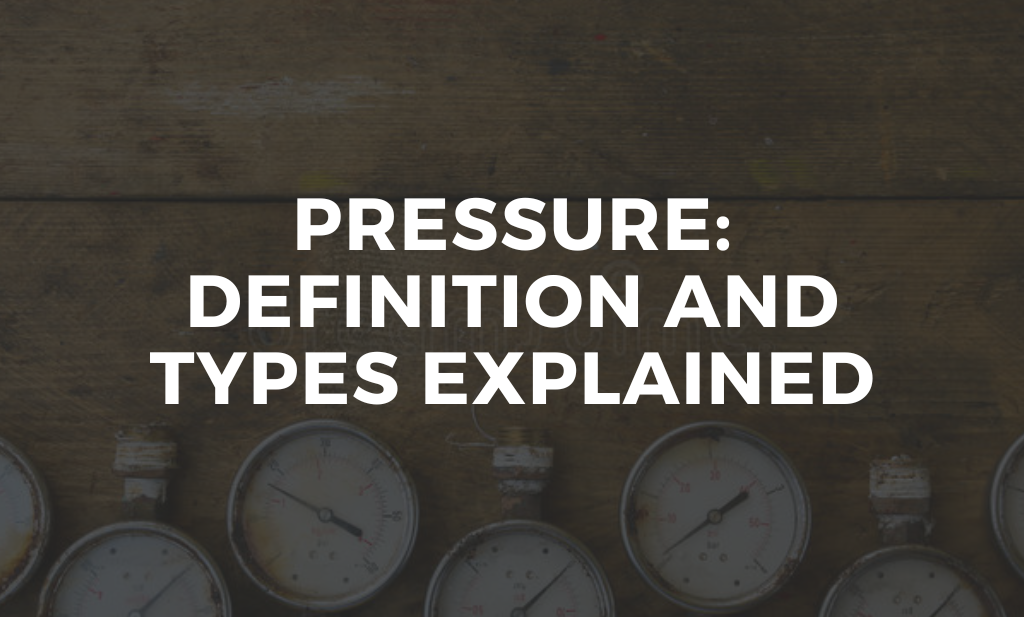- June 1, 2022
- by Emmanuel
- Uncategorized
Pressure: Definition and Types Explained
It is not immediately evident that we live in a world where pressure is applied to every inch of our body (about 14.7 pounds per square inch at sea level). This was recognized in the 17th century by Evangelista Torricelli. “We live submerged at the bottom of an ocean of the element air,” he explained. Barometric pressure refers to the pressure exerted by the atmosphere in our gravitational field, which is an absolute pressure that varies with different weather systems. Because the slightly incompressible fluids in our body exert an equal and opposite pressure, we don’t feel this great amount of pressure.Different instruments will require a different calibration process. For example, a calibration lab will calibrate sensors differently from thermometers. Often, you can hire experts to come to your facility to calibrate the equipment, or you can send the equipment to a lab for calibration.Different instruments will require a different calibration process. For example, a calibration lab will calibrate sensors differently from thermometers. Often times, you can hire experts to come to your facility to calibrate the equipment, or you can send the equipment to a lab for calibration.
A force exerted perpendicular to an object’s surface per unit area is known as pressure. P = F/A is the mathematical formula, with P denoting pressure, F denoting force, and A denoting area. Pressure is a scalar quantity, meaning it has only magnitude and no directional vector properties. In practice, we can consider it as a force that operates equally on all surfaces to which it is exposed and is caused by the collective energy of the gas or liquid that touches that surface. Absolute and gauge pressures are distinguished by the pressure to which they are compared, which is known as the reference pressure.
For someone new to pressure measurement, the standard nomenclature used to describe the physical characteristic of a pressured system can be a little confusing. When selecting a pressure gauge, pressure controller, or calibrator, as well as a pressure transmitter, transducer, or sensor, knowing the standard terminology gives a common vocabulary that ensures you get exactly what you want. A discrepancy between the calibrated and the calibrator will also be eliminated.
The ambient atmospheric pressure is used as the gauge pressure’s reference. The standard for absolute pressure is an absolute vacuum. In a way, they’re both reading the difference between the reference pressure and the applied pressure. The reference pressure for gauge pressure, on the other hand, may fluctuate based on the current atmospheric pressure.
When a vessel is exposed to atmospheric pressure, we may wish to ensure that the vessel does not explode or implode. In this scenario, we can use a gauge pressure sensor with the reference exposed to air pressure to measure the difference between the ambient pressure and the internal pressure of the tank.
Types of Pressure
- Differential pressure is the comparison of two different pressures. In essence, because they compare one pressure to another, all pressure measurements are differential. Differential pressure is used to assess flow in a pipeline, level, density, and even temperature, and is normally recorded at elevated line pressures.
- Vacuum pressure, like gauge pressure, is a measure of pressure below atmospheric pressure and is stated as a positive number.
- Bidirectional pressure, also known as gauge pressure, uses atmospheric pressure as a reference but measures pressure above atmospheric pressure as a positive pressure and pressure below atmospheric pressure as a negative pressure.
Call us to discuss your calibration needs at:
713.944.3139.



